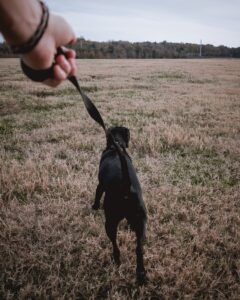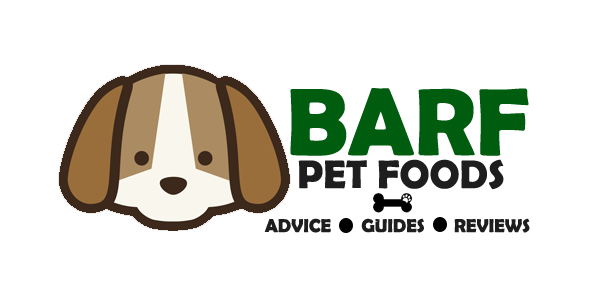Whether you’re a new dog owner or just looking to brush up on your obedience training techniques, using a dog lead is an essential part of the process. In this article, we’ll take a look at how to use leads effectively during training and provide some tips on how to choose the right one for your pet.
So whether you’re just starting out or looking for some advice on better leash-handling skills, keep reading!
What are the different types of dog training leads?
There are a variety of dog training leads available on the market, each designed for different purposes. The most common types are:
 – Standard Dog Lead: A standard dog lead is a basic leash that attaches to your dog’s collar and can be used for everyday walks or obedience training exercises.
– Standard Dog Lead: A standard dog lead is a basic leash that attaches to your dog’s collar and can be used for everyday walks or obedience training exercises.
– Training Lead: A training lead is a longer leash that gives you more control over your dog during training sessions. These leads are often used in conjunction with a training collar (see below) and can be clipped to your belt or waist for hands-free use.
– Slip Lead: A slip lead is a loop leash that slips over your dog’s head and attaches to their collar. These leads are often used in agility or obedience training where quick corrections are needed.
– Long Line: A long line is a very long leash (usually 30-50 feet) that allows your dog to roam freely while still under your control. These leads are great for recall training or letting your dog explore off-leash in safe areas.
How do I choose the right dog training lead?
The type of dog training lead you choose will depend on your needs and what you’ll be using it for. If you’re just starting out with basic obedience training, a standard lead should be fine. However, if you’re looking for more control during training sessions or want to try some off-leash activities, you may need a longer lead or one with special features.
Here are some things to keep in mind when choosing a dog training lead:
– Length: How much room does your dog need to roam? If you’ll be doing a lot of training exercises or working in small spaces, a shorter lead may be best. For off-leash activities or recall training, a longer lead will give your dog more freedom to explore while still staying under your control.
– Material: Dog leads are typically made from nylon or leather. Nylon is more affordable and durable, while leather is more comfortable for your dog to wear and has a luxurious look.
– Features: Some leads come with special features like reflective material, built-in waste bag dispensers, or padded handles for extra comfort. Consider what features would be most useful for you and your dog before making a purchase.
How to use dog training leads
 Now that you know how to choose the right dog training lead, put it to good use with these tips:
Now that you know how to choose the right dog training lead, put it to good use with these tips:
– Start with basic obedience commands like sit, stay, come, and down. Use treats or praise to reward your dog for following your commands.
– If your dog is pulling on the lead, stop walking and make them sit or lie down until they calm down. This will teach them that pulling gets them nowhere.
– For recall training, attach a long line to your dog’s collar and let them explore off-leash in a safe area. Call them back to you frequently, and give them a treat or toy when they return.
– If you’re using a slip lead, be careful not to jerk on it or pull too hard. This can hurt your dog and damage its throat or neck.
With these tips in mind, you’re well on your way to becoming a pro at using dog training leads!
The benefits of a training lead
A dog training lead is an essential tool for any dog owner who wants to train their pet. There are many benefits to using a dog training lead, including the ability to control where your dog goes and how they behave.
A dog training lead can also help to keep your dog safe from hazards, as you can order them to stay away from danger. In addition, a dog training lead can be used to teach your dog tricks and commands.
With a little patience and practice, you can use the lead to help your dog become the well-behaved pet you always wanted.
Are dog training leads good?
Simply put, yes.
When it comes to dog training, there are a lot of different methods and tools that people use. From positive reinforcement to clicker training, there are a variety of ways to help your furry friend learn the behaviours you want. One popular tool is the leash, and there are a lot of different choices when it comes to leashes. But are dog training leads really effective?
There is no one-size-fits-all answer to this question, as it depends on a lot of factors, including the type of dog you have and the behaviours you’re trying to teach. However, in general, dog training leads can be a helpful tool for teaching your dog basic obedience commands like sit, stay, and come. They can also be useful for teaching your dog not to pull on the leash or jump up on people. The key is to use the leash correctly and not to rely on it too heavily. If you do that, then yes, dog training leads can be quite effective.
Although they come in many different shapes, sizes and materials, the most common type of dog training lead is a leash, which is used to keep your dog close by your side when walking them. Other popular types of dog training leads include slip leads, long lines, and check cords. No matter what type of dog training lead you to choose, be sure to select one that is comfortable for both you and your dog.
Should you use a lead with a dog harness or headcollar?
 If you’re like most dog owners, you want your furry friend to be well-behaved. But choosing the right training lead can be confusing. Should you go with a harness or a headcollar? The answer may surprise you.
If you’re like most dog owners, you want your furry friend to be well-behaved. But choosing the right training lead can be confusing. Should you go with a harness or a headcollar? The answer may surprise you.
Harnesses are a popular choice for small dogs, as they distribute the pressure evenly around the chest and shoulders, we have written a guide in fact on the best harnesses for a cockapoo which is a medium-sized breed. However, harnesses can actually make it easier for dogs to pull, since they’re often equipped with a D-ring at the front that allows hounds to leverage their body weight. For larger breeds, a harness can also be uncomfortable, especially if they’re not properly fitted.
Headcollars, on the other hand, attach around a dog’s muzzle and put gentle pressure on the back of the head when he or she tries to pull. This design helps to discourage dogs from pulling, since they instinctively want to avoid anything that puts pressure on their neck. Headcollars can be particularly effective for large breeds that are strong enough to easily pull on a leash.
So, which is the best option for your pup? It’s your personal preference! But if you’re not sure, consult with a professional trainer or behaviourist who can assess your dog’s individual needs. Whichever type of training lead you choose
What is the etiquette for leash training?
Leash training is an important part of being a responsible dog owner. Not only does it keep your pet safe, but it also helps to ensure that they behave politely in public. But what is the proper etiquette for leash training?
The first and most important rule of leash etiquette is to never use excessive force. We’ve eluded to this before but it includes jerking on the leash or pulling too hard. Doing so can damage your dog’s throat or neck, and it can also be painful for them.
Instead of using force, use positive reinforcement to encourage your dog to walk nicely on a leash. This may include treats, praise, or toys.
Another important rule of leash etiquette is to always clean up after your dog, which should go without saying. This means carrying bags with you to pick up their waste, and not leaving it on the ground for someone else to deal with. Not only is this rude, but it’s also a health hazard for both people and animals.
Leash training takes time and patience, but following these simple etiquette rules will help to make the process go smoothly.
How do you stop a dog pulling on a lead?
 If your dog is pulling on their lead, there are a few things you can do to stop them. One of the most effective methods is to use a headcollar. As we touched on previously headcollars work by applying gentle pressure to the back of the head when a dog tries to pull. This pressure is uncomfortable for dogs, and it helps to discourage them from pulling on the lead.
If your dog is pulling on their lead, there are a few things you can do to stop them. One of the most effective methods is to use a headcollar. As we touched on previously headcollars work by applying gentle pressure to the back of the head when a dog tries to pull. This pressure is uncomfortable for dogs, and it helps to discourage them from pulling on the lead.
Another method you can use to stop a dog from pulling is to simply change direction when they start to pull. Dogs are curious creatures, and they will often follow along if you turn and walk in the opposite direction. This method takes patience and practice, but it’s often successful in getting dogs to stop pulling on their leash.
Finally, you can also try using positive reinforcement to encourage your dog to walk nicely on a lead. This may include treats, praise, or toys. Dog owners should never use excessive force when leash training, as this can be painful and damaging for dogs. With patience and the right method, you can successfully stop your dog from pulling on their lead.
How long does it take to train a dog not to pull?
The amount of time it takes to train a dog not to pull will vary depending on the individual dog, so, unfortunately, we don’t really have a great answer for you. Some dogs may catch on quickly, while others may need more time and patience. However, most dogs can be trained not to pull with consistency and positive reinforcement.
Dog owners should never use excessive force when leash training, as this can be painful and damaging for dogs. With patience and the right method, you can successfully stop your dog from pulling on their lead.
Why do dog trainers hate retractable leashes?
There are a few reasons why dog trainers hate retractable leashes. First, retractable leashes can be dangerous for both dogs and their owners. If the leash is not properly secured, it can easily come undone and cause the dog to run away.
Additionally, the Dog Trainers of America have found that dogs who are trained with retractable leashes are more likely to pull on their lead.
Another reason why dog trainers dislike retractable leashes is that they can be difficult to control. The length of the leash can make it challenging to keep your dog close by, which makes it difficult to train them properly.
Finally, many people find retractable leashes to be annoying and disruptive when used in public places. Dog trainers typically recommend using a standard leash instead of a retractable one.




